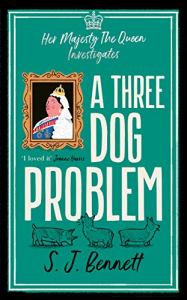 [From KMW: Since I am traveling this week, I’m offering up a shorter post today about how to write better action scenes. For my birthday, I gave myself a month-long “writing retreat” in the mountains! I’ll be posting regular content again next week, and you can check Instagram for some peeks into my adventures.]
[From KMW: Since I am traveling this week, I’m offering up a shorter post today about how to write better action scenes. For my birthday, I gave myself a month-long “writing retreat” in the mountains! I’ll be posting regular content again next week, and you can check Instagram for some peeks into my adventures.]
As an author, you want to create characters so rich and compelling readers will carry a piece of the story with them for the rest of their lives. Then, once you’ve peopled your pages with vivid personalities, you want to shove them into the middle of the most gripping and exciting situations you can think of. The more readers care of about these people, the more likely they are to care about your book.
However, no matter how compelling your characters or how gripping your action, you may still run the great risk of losing readers if you’re employing a distant narrative that pulls readers out of the story, rather than pulling them in deeper.
Here’s an example: A fantasy I read recently featured some of the most brilliant actions scenes I’ve ever read… and yet it still had me yawning and peeking ahead to the next scene.
What went wrong?
In these scenes, the author chose to employ a distant narrative that skimmed over the entirety of the battle, rather than focusing on the personal involvement of the characters I cared about.
The writing went something like this (with a little help from ChatGPT):
Elada drew her slender elven longbow and nocked an arrow. In one fluid motion, she released the arrow, and it flew true, striking one of the bandits in the chest before he could react.
He fell to the ground with a cry.
The remaining bandits lunged at her.
Elada was already in motion. She somersaulted backward, cloak billowing like a shroud. She released arrow after arrow, and the bandits fell, silenced by her relentless assault.
Versus something like this that focuses on how the events are affecting the character:
Lourde’s breath came in ragged gasps. Sweat trickled down his temples beneath his helm. Fear surged through him, a gnawing dread that threatened to paralyze his every move.
But amidst the fear, there was something else, something powerful and relentless—the burning fire of determination. His chest swelled with resolve as he remembered the faces of those he fought for, the innocent villagers who depended on him, the homeland he was sworn to protect.
He let out a battle cry, a primal roar that shattered the suffocating grip of fear. With newfound strength, he charged into the fray, his sword slicing through the air like an extension of his very being. The clang of steel against steel, the roar of fireballs, and the screams of the enemy blended into a cacophonous symphony of battle.
With every swing of his blade, Alaric felt a surge of exhilaration. He was not just a soldier; he was a guardian, a protector. Each strike was a testament to his unyielding will to defend his people. His heart pounded with a fierce joy as he carved a path through the enemy ranks, his movements a dance of death and defiance.
The author was certainly employing all the important techniques of “showing” the action, rather than “telling” it. But because he wasn’t keeping (me) engaged with what was happening for the characters on a personal level, the effect was to distance me from what should have been intense and exciting scenes.
Even the most well-written action scenes grow boring if the reader isn’t given a character to root for. Distant narrative serve its purpose, but it’s largely fallen out of favor in recent decades, due to this very pitfall.
Take a look at your story, particularly your tense, high-emotion scenes, and evaluate them.
- Are you allowing readers to experience the scene through the characters’ reactions and actions?
- Are readers able to stick by the characters every step of the way, gasping when they stumble and cheering when they rally?
If not, consider tightening your narrative. Doing so will not only inject more excitement and interest into your scene, it will also be more likely to keep readers on the edge of their seats.






